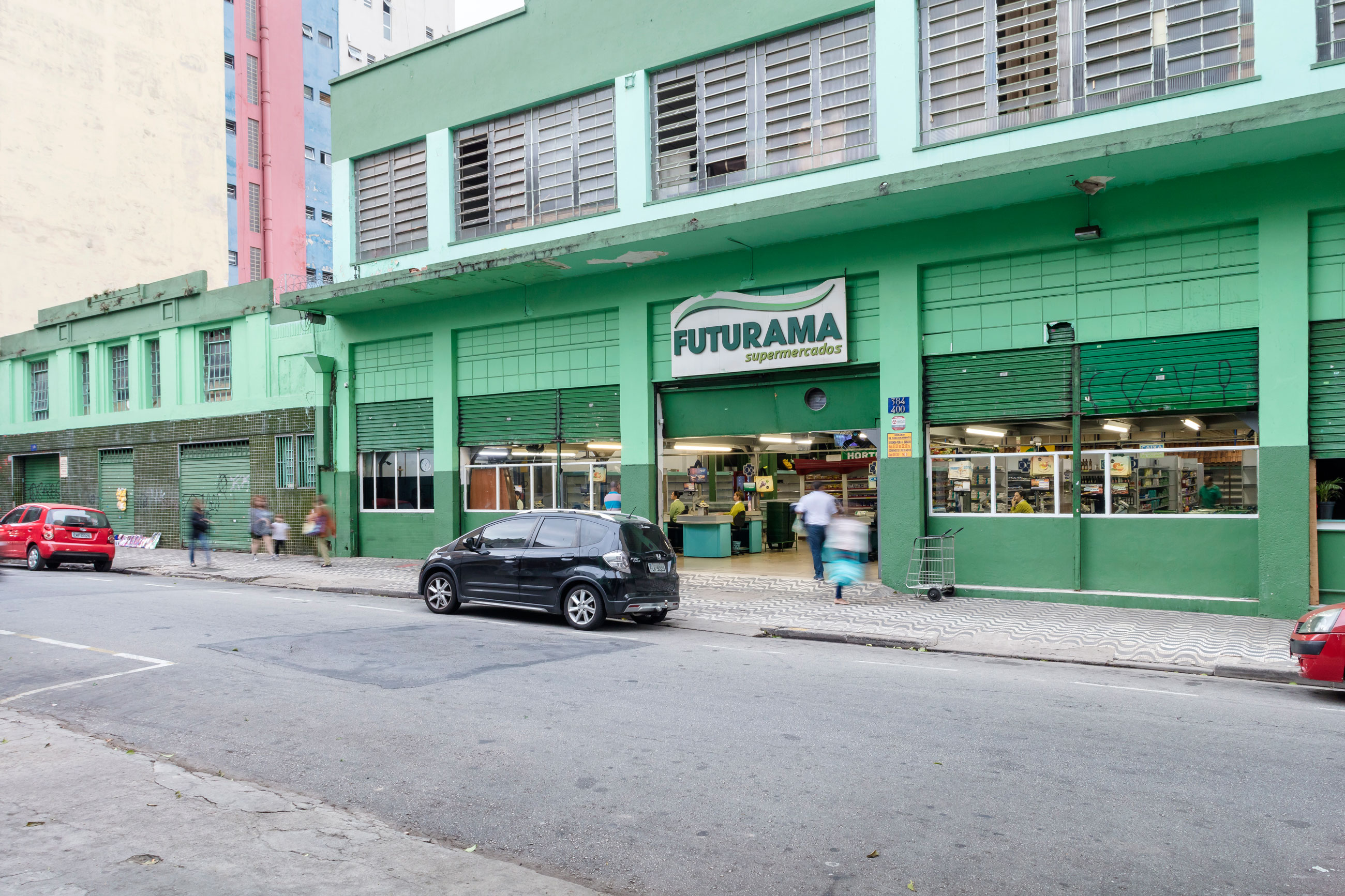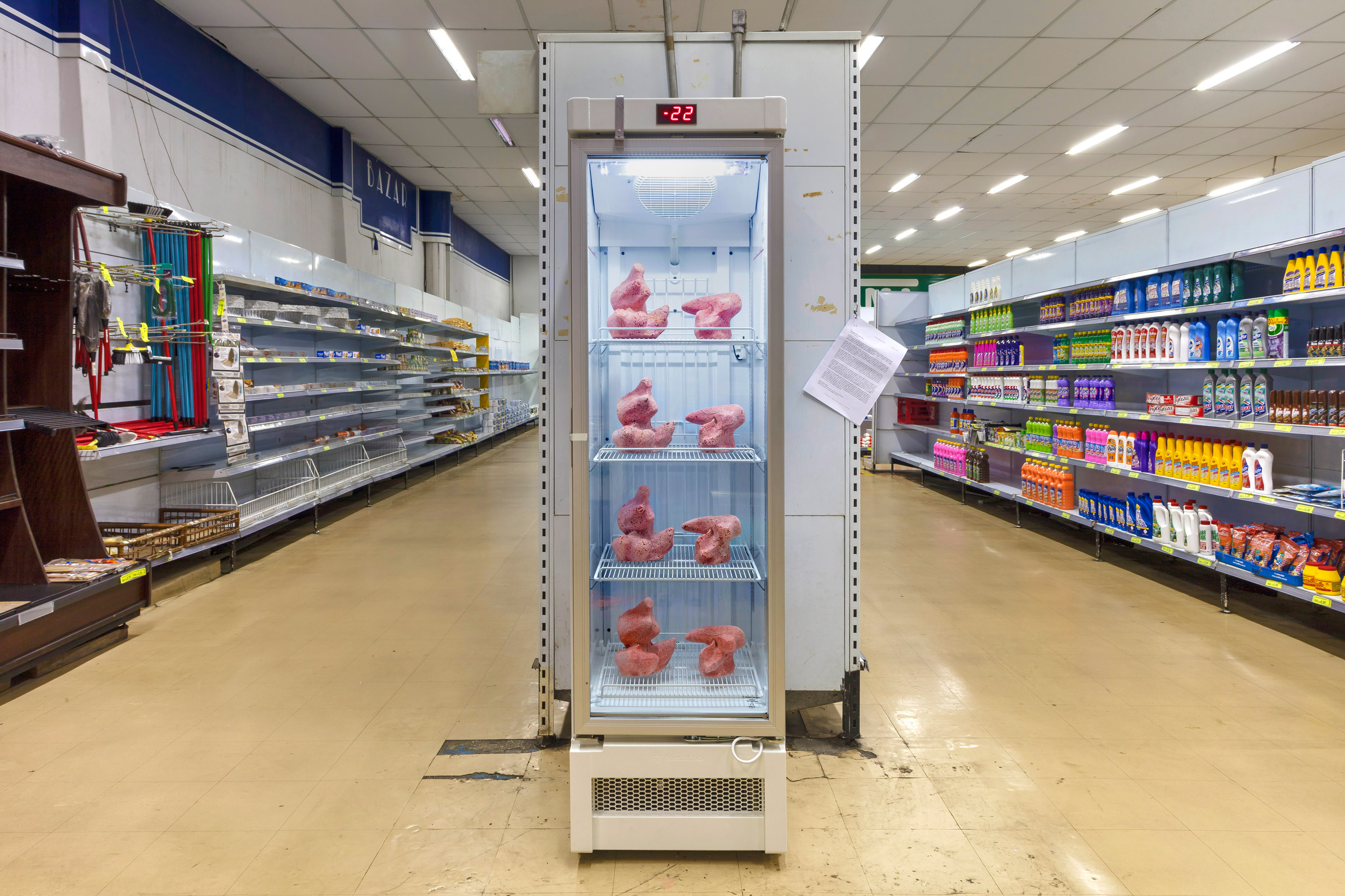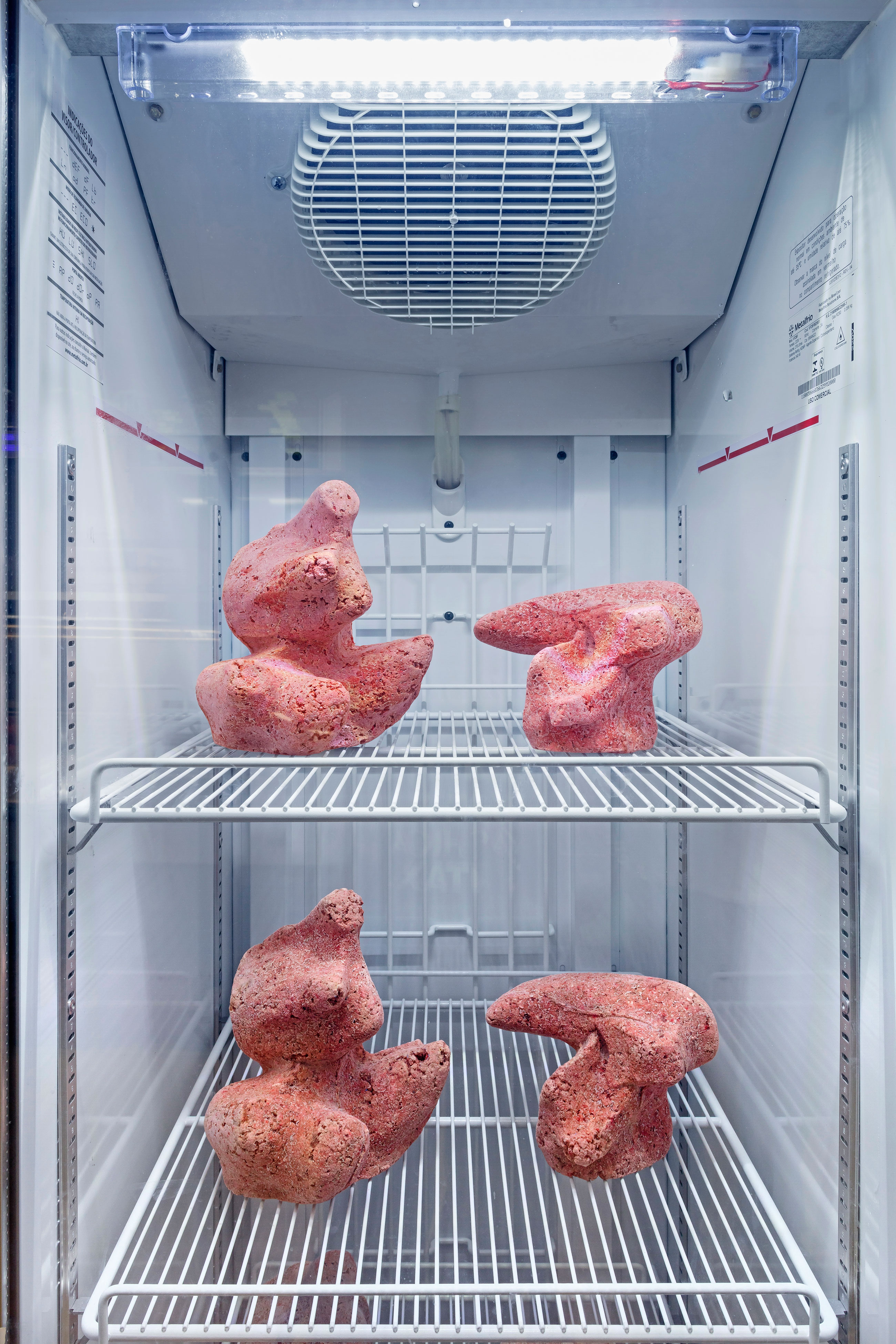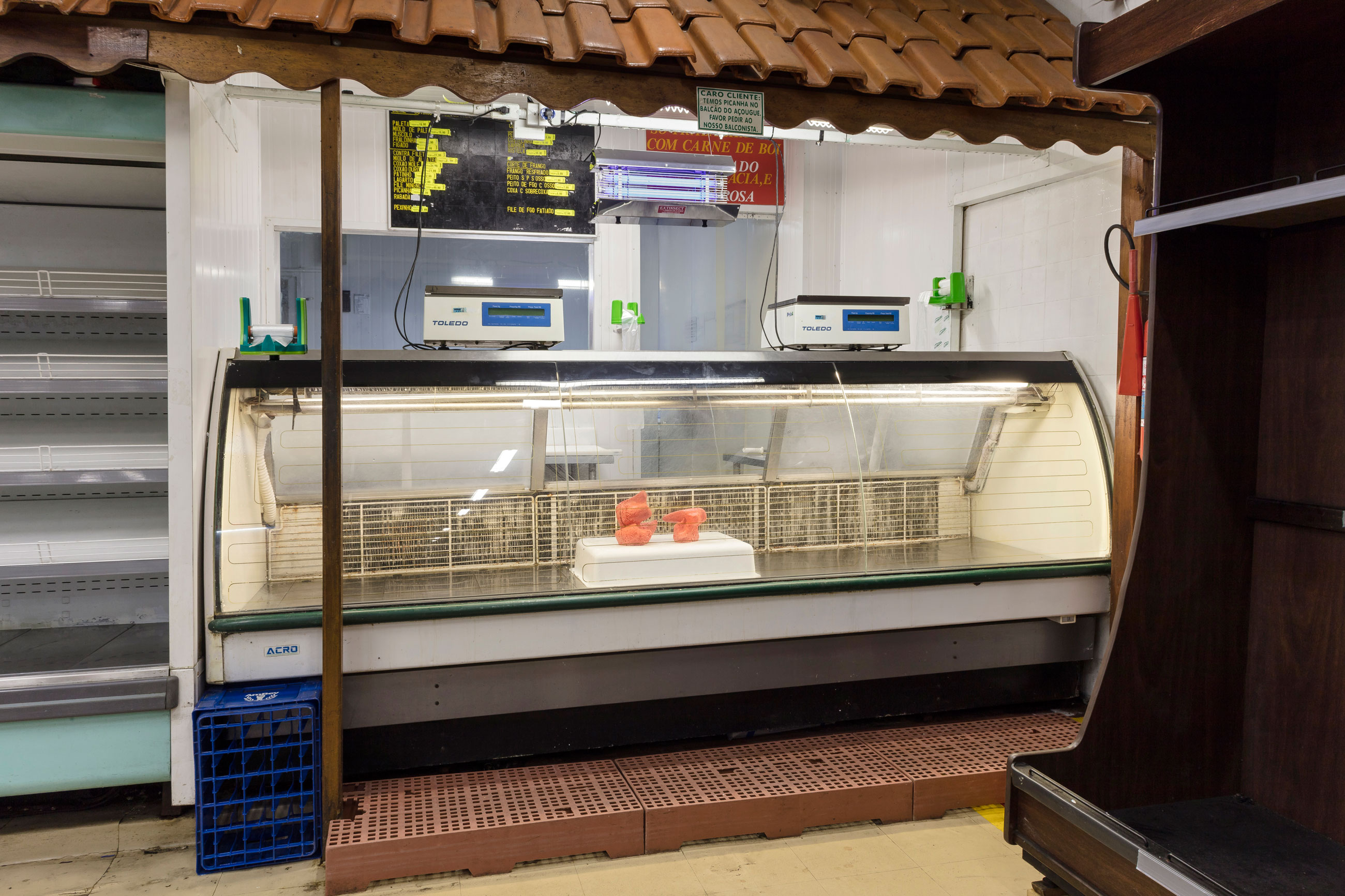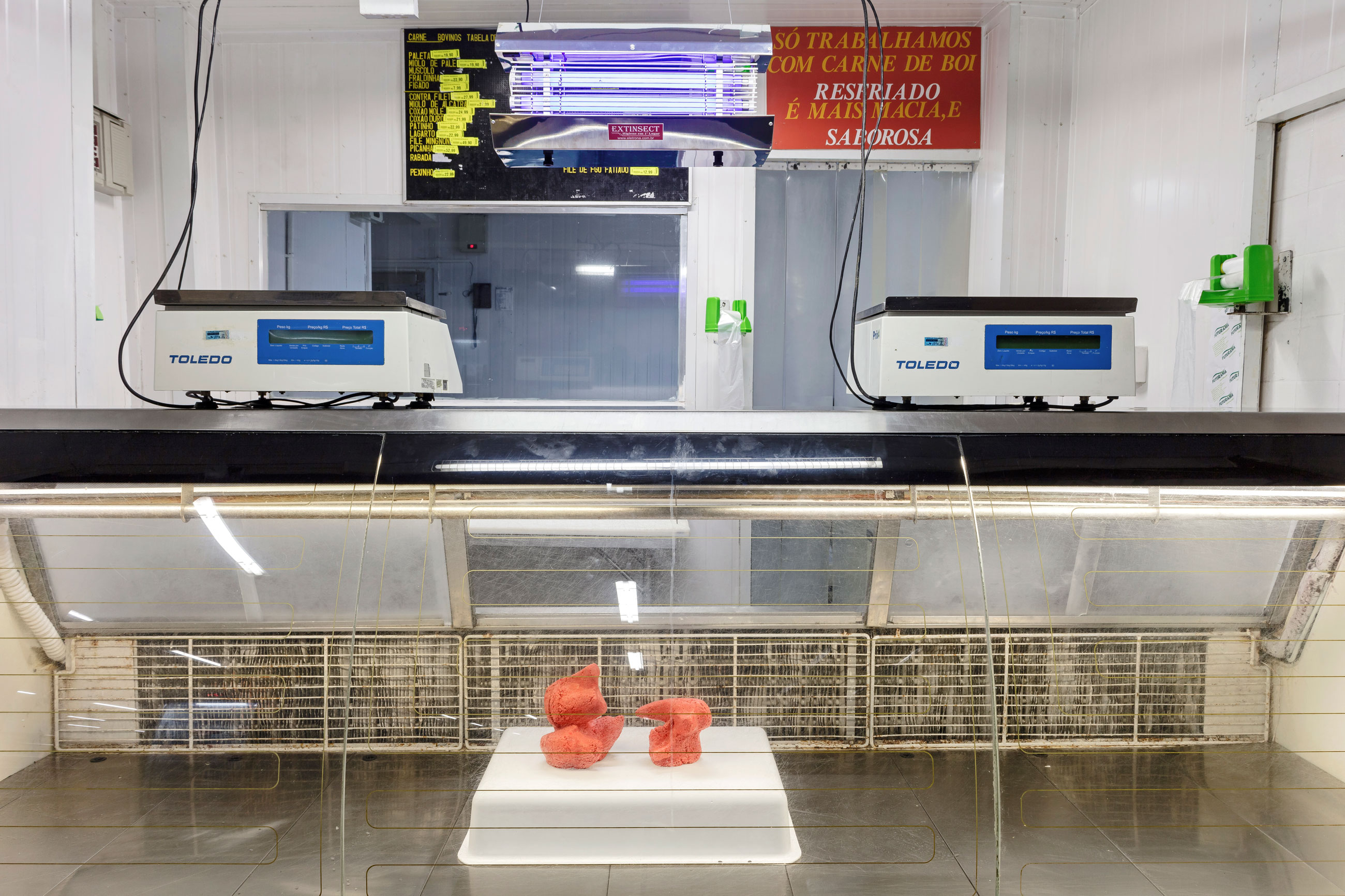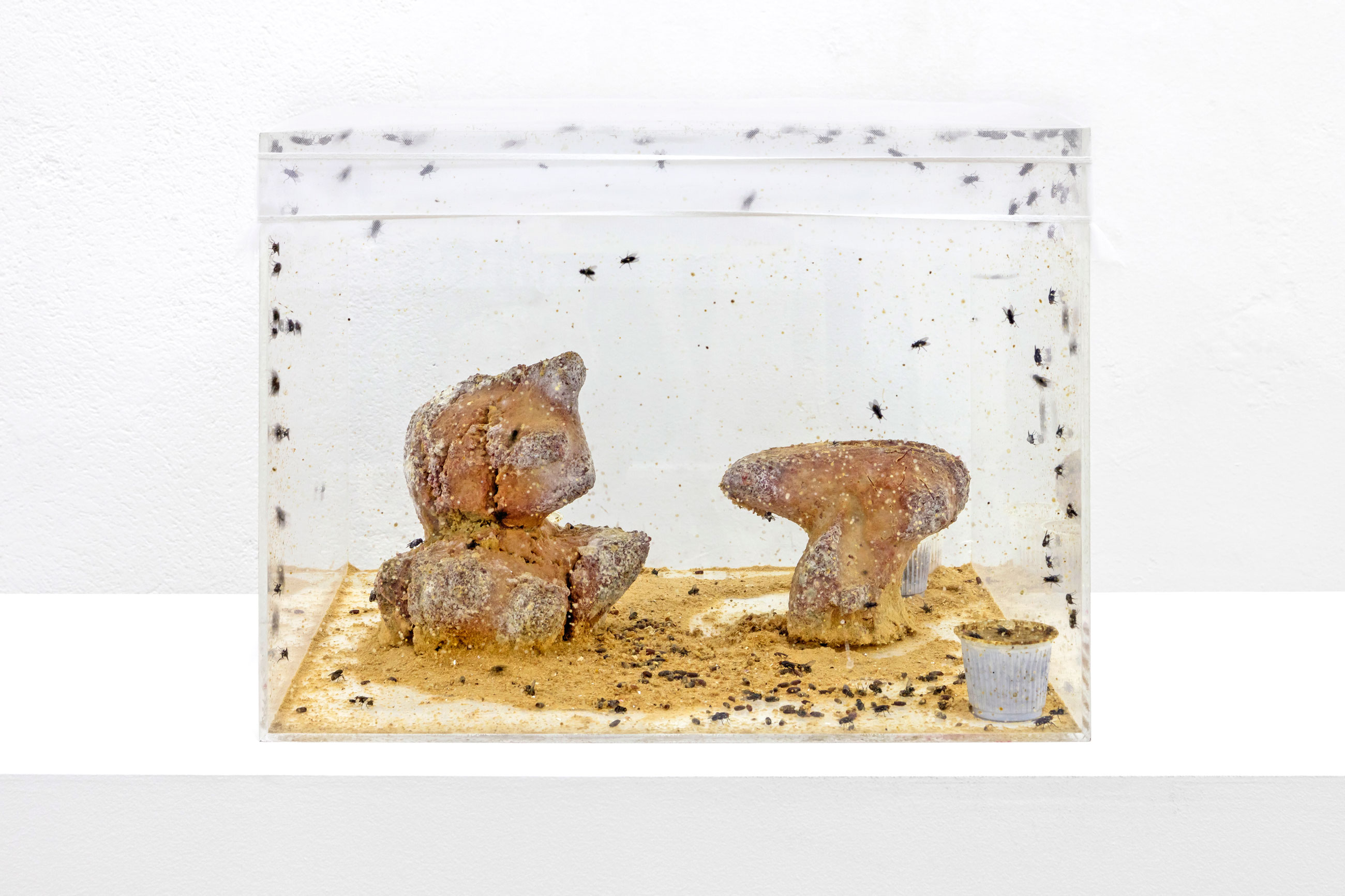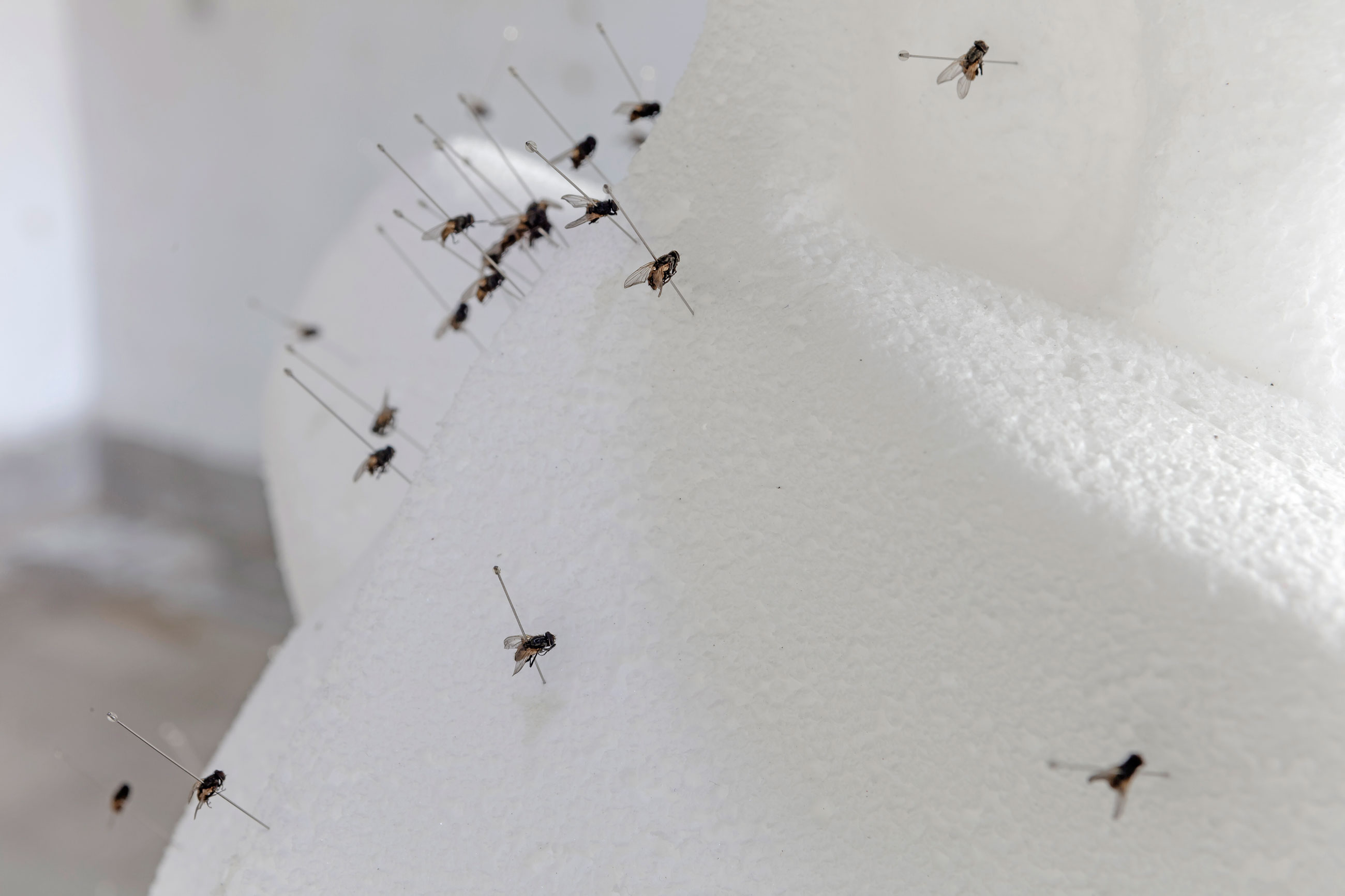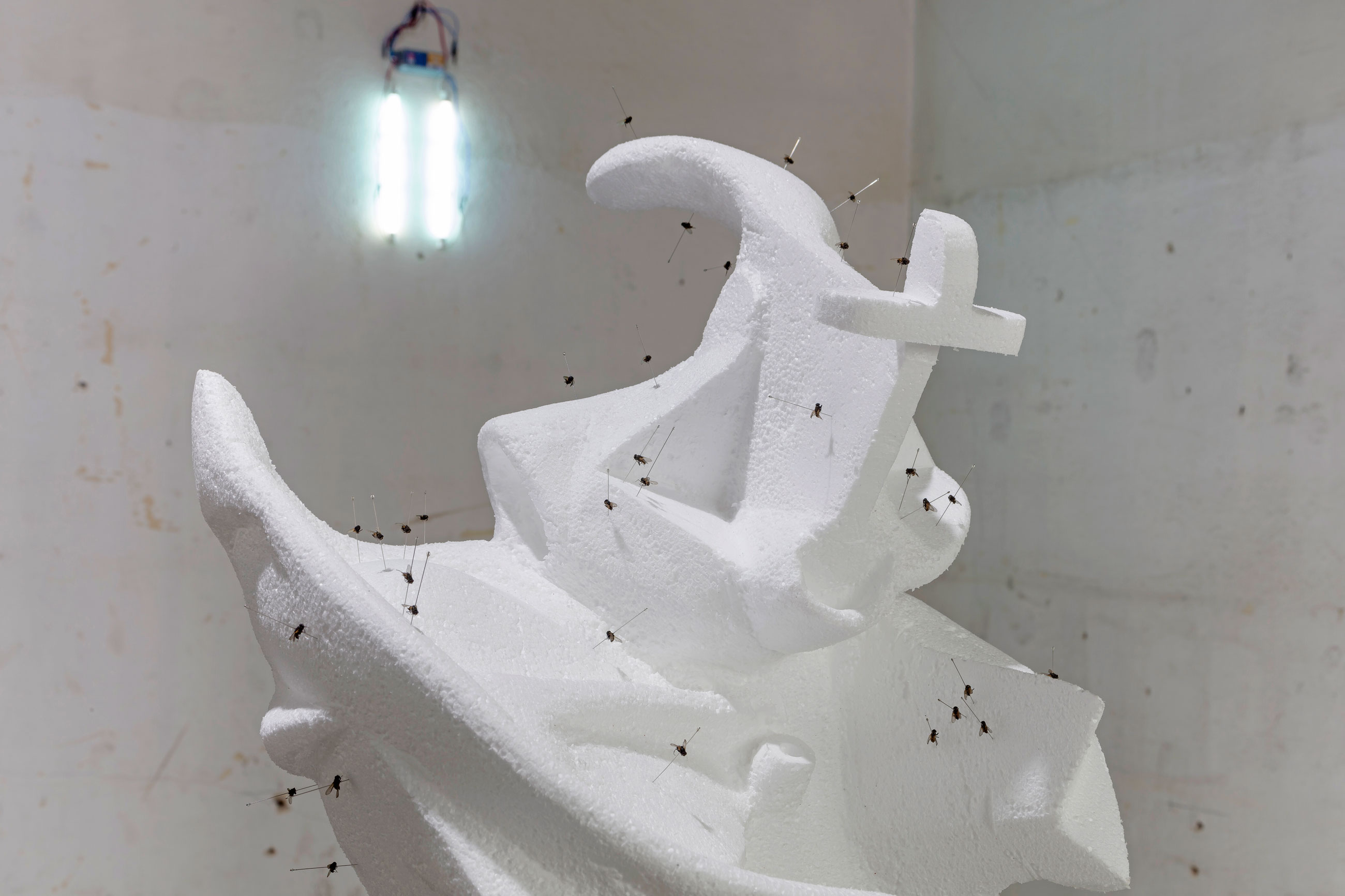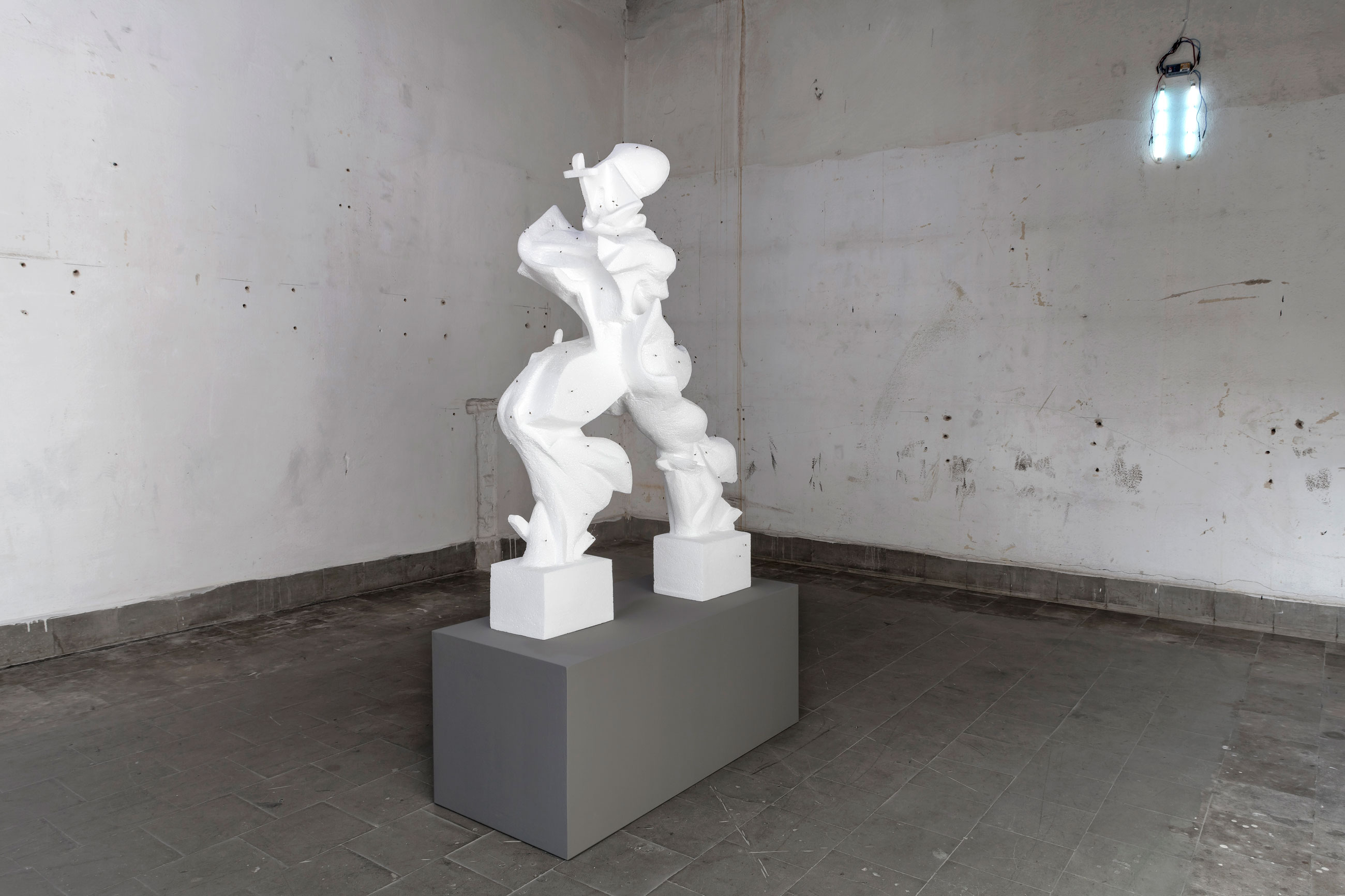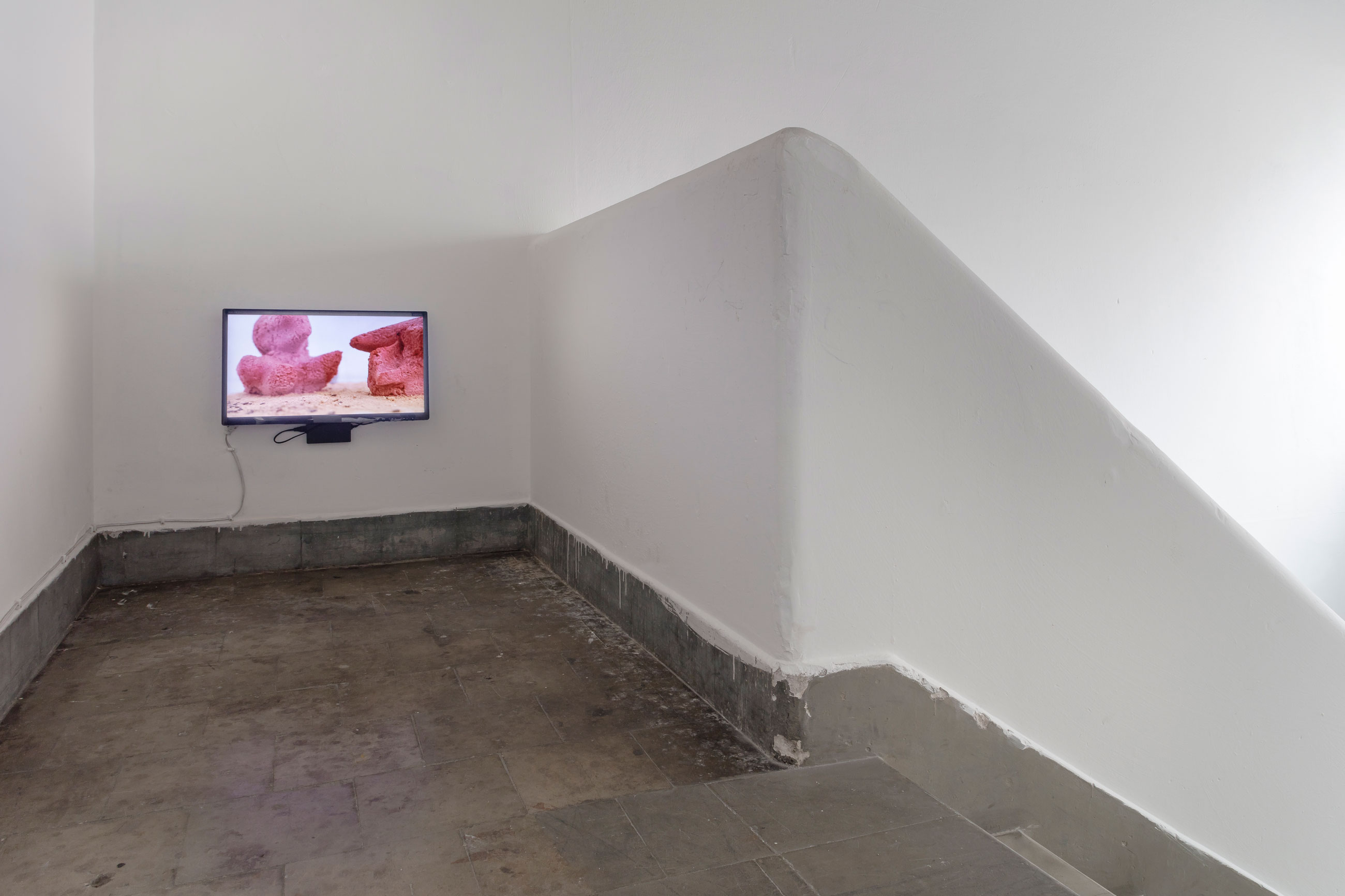Assisted Reproduction
in 1:1
In Assisted Reproduction João Loureiro correlated the gallery’s exhibition space with a butcher shop in the supermarket Futurama. This supermarket was almost empty and on the verge of shutting-down since part of its billing was blocked as it was under investigation for misappropriation of money. In the supermarket’s butcher shop, a freezer cabinet contained sculptures made with ground meat and shaped as small-scale reproductions of the artwork Two-Piece Reclining Figure: Points by Henry Moore. Weekly, one of these sculptures was placed in the main refrigerated case, replacing the previous one, which was transported to a captive breeding of houseflies, and there became food for these insects.
Weekly, the artist released the adult flies in the vicinity of the supermarket and collected the dead flies from the insect light trap inside the butcher shop. The flies’ carcasses were then taken to the exhibition space and stuck, with entomological pins, onto a styrofoam full-scale reproduction of the work Unique Forms of Continuity in Space by Umberto Boccioni. Throughout the exhibition the same processes were repeated and the sculpture increasingly accumulated dead flies.
Unique Forms of Continuity in Space is one of the main symbols of Futurism, a proto-fascist movement initiated in Italy at the beginning of the twentieth century. It was endowed with an aesthetic and political ideology that boasted modern progress, breaking ferociously with any kind of nostalgia for the past. Aspiring for a total renewal of human life, Futurism extended its sphere of action to fields such as cooking. Meat sculptures were one of the dishes defended by the Futurist Cooking Manifesto. Aiming to transcend food’s dietary function, Futurists sought to use it as an artistic medium, and as an instrument for the diffusion of nationalist ideals, which aimed at the transformation of the population’s bodies and minds. The marching-man sculpted in Unique Forms of Continuity in Space synthesizes this mutating body. The sculpture’s original matrix in plaster, from which the well-known bronze versions were cast, belongs to the Museum of Contemporary Art of the University of São Paulo (MAC USP). The sculpture’s fourth and last cast was made at the request of TATE and exchanged with MAC USP for Moore’s Two-Piece Reclining Figure: Points.
1:1 #1
Assisted Reproduction
by João Loureiro (1972, Brazil)
12.05 – 21.07.2018
Galeria Jaqueline Martins & Futurama supermarket, São Paulo, Brazil
Photos by Filipe Berndt, courtesy of the artist & Galeria Jaqueline Martins
